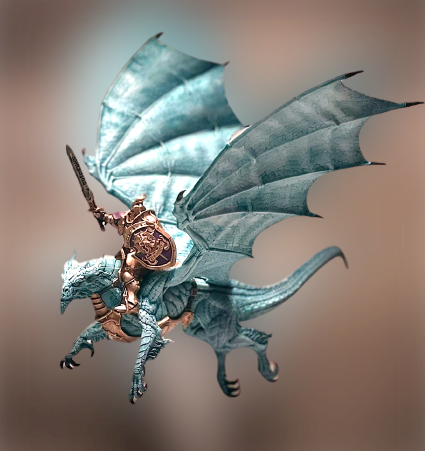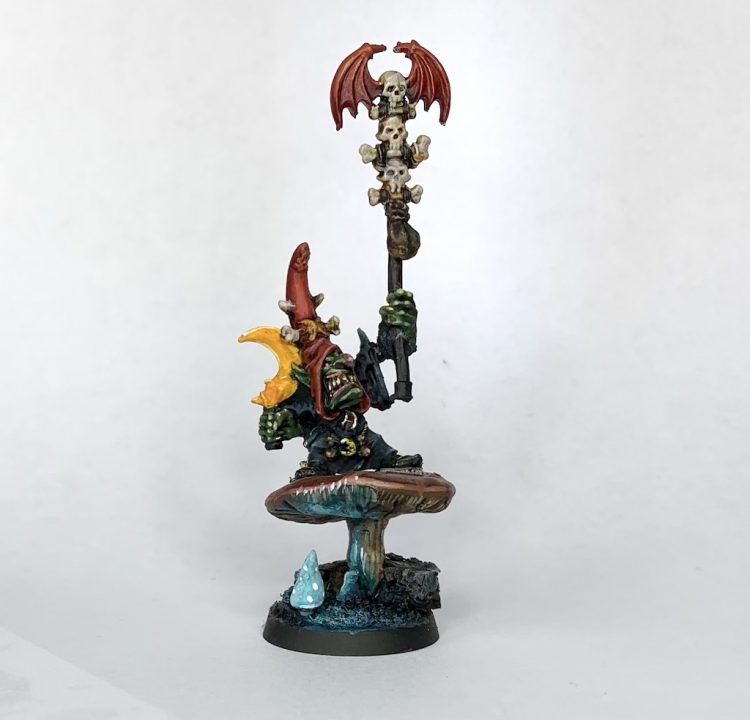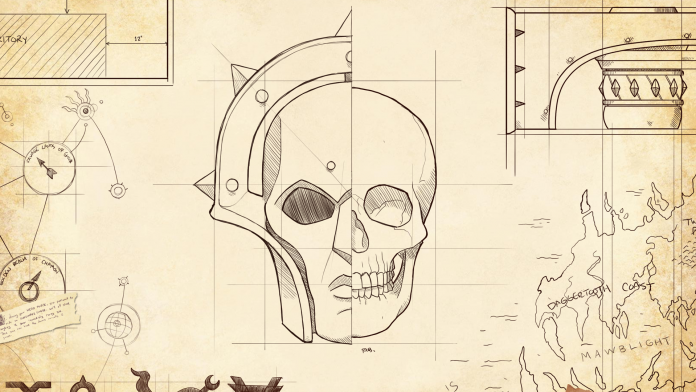The new General’s Handbook has finally arrived, bringing us into the cold lands of Andtor. While most events continued to run the old GHB on the weekend of release, I was able to attend the first tournament in the world running the new rules. Drawing from my own experience, and conversations with the other players at the event, I’ve brought back some hot insights to break the ice on this new season.
The Renegades of the Realms tournament, run at the TSports Arena, was attended by 24 players and gave one of the first glimpse at how these much-anticipated changes would play out in a proper tournament setting.
My List - Click to Expand
Allegiance: Slaves to Darkness
– Damned Legion: Cabalists
– Grand Strategy: Barren Wasteland
– Triumphs: Inspired
Leaders
Raven Father of the All Points (860)
Archaon the Everchosen
– The Lore of the Damned: Daemonic Speed
Spirit of Shadow (340)*
Be’Lakor, the Dark Master
– The Lore of the Damned: Binding Damnation
Freyja Iskad, Harbinger of Winter (90)*
Exalted Hero of Chaos
– General
– Command Trait: Idolater Lord
– Artefact: The Conqueror’s Crown
– Mark of Chaos: Nurgle
– The Lore of Primal Frost: Merciless Blizzard
– Universal Prayer Scripture: Curse
Battleline
Norsca Raiders (70)*
9 x Spire Tyrants
– Mark of Chaos: Nurgle
Norsca Raiders (70)*
9 x Spire Tyrants
– Mark of Chaos: Nurgle
Servants of the Shadow (80)*
9 x Corvus Cabal
– Mark of Chaos: Nurgle
Behemoths
Bound Blood (480)*
Krondspine Incarnate of Ghur
– Allies
Core Battalions
*Battle Regiment
Total: 1990 / 2000
Reinforced Units: 0 / 4
Allies: 480 / 400
Wounds: 72
Drops: 2
I was running a simple list of Archaon, Be’lakor, and a Krondspine Incarnate, partly so I could focus on getting to grips with the new rules and partly because the new points drops made it possible to fit all three in a list for the first time. A range of other armies were represented at the event, including some of the current top performers like Seraphon, Soublight, Khorne, and Gitz. For a rundown of the event results and winning army, go check out it out here.
Battle Tactics and You
One of the most talked about changes coming into this new season was the new slate of generic battle tactics players would be drawing from in their games. We’ve come a long way from the days of scoring by running three units, and there’s been a noticeable trend towards more difficult, situational battle tactics by Games Workshop.
So is it, as some feared, that those without good battle-tome tactics are going to be left out in the cold when it comes to scoring? Not quite, but thinking about how you will achieve battle tactics will take an even more prominent role in list building.
The new generic tactics are definitely more difficult, and in several games, I found myself struggling for one that was achievable. One of the main differences now is that they are no longer incidental to achieving the primary. Whereas before, you could score by taking objectives and killing units, now you’ll need to position units along board edges or destroy your enemies with spells.
However, these are issues that can be tackled in list building. With my list almost entirely consisting of three large pieces, I struggled to be able to both contest objectives and divert resources to achieving tactics.
Surround and Destroy requires three units near board edges, Led into the Maelstrom needs a hero and battleline ready to make a charge, while Bait the Trap needs two units in combat to retreat, and another two ready to charge. Multiple cheap, fast units will be important to opening up options to achieve these battle tactics, while at the same time not sacrificing too much power on objectives.

Dusting of the Old Tome
With the easiest generic battle tactics going away, there’s no doubt that good book tactics are an even more valuable resource.
You by no means need a full slate of achievable book tactics, though, and the general consensus from the event was that 2-3 ‘easy’ tactics were enough for an army to feel comfortable.
Several armies have units that unlock battle tactics of their own, whether it’s Khinerai in Daughters of Khaine, Stormdrake Guard in Stormcast Eternals, or flies in Maggotkin of Nurgle. When writing your lists, it’s worth giving these units a second look for the flexibility they’ll give you when it comes to achieving tactics. In my games, I repeatedly found myself missing that single ensorcelled banner that would have opened up the March of Ruin Slaves to Darkness battle tactic.
Must be the Season of the Witch
Billed as the season of magic, it’s no surprise that wizards are shaping up to play a pivotal role this General’s Handbook.
Having previously mentioned the need to build towards battle tactics, including a single wizard will unlock two of them for you from this handbook. I would have seriously struggled for first-turn battle tactics were it not for Magical Mayhem (cast a spell and have no spells unbound). My go-to plan was to sit Be’lakor at the back of the board, outside of unbind range, and cast Mystic Shield. As he was there more as a support piece with his ability, I didn’t suffer from keeping him away from the front line, and his speed let him quickly catch up.
When setting up, it’s worth thinking about these unbind ranges, and if you have a wizard you don’t mind keeping back for a turn or two. It also provides an increased incentive for going first, casting your own spell and moving into range to potentially unbind your opponents.
Going Primal
While primal dice is seeing all spell casting up a gear, some of the biggest impact is coming from the spells in the new Lore of Primal Frost. Hoarfrost has been widely discussed for its potential as a force multiplier, but the biggest impact from the weekend came from Merciless Blizzard. It turns out 4D6 mortals are pretty good. What’s more, with primal dice, its casting value of 12 is possible for even your most basic wizard.
In my games, I used Blizzard to almost one-shot both Nefferata and a Stardrake. I wasn’t alone. In other games, people lifted units of Squig Hoppers and blasted Stonehorns with this spell. Going forward, this is likely to have a significant effect on games and the meta, representing a serious source of burst damage available to almost every army. Even without teleports, wizards can project a 12” danger zone from behind their front line. Blizzard will force players to consider where they’re putting their expensive hammer, or if they even take them at all.
In the midst of all this spellcasting, even a single unbind is valuable, whether it’s from a wizard, priest, or pack of dogs. Primal dice are even better at unbinding than casting, as there’s no chance of a primal miscast, but they need someone there to utilise them. Heroic willpower helps bridge the gap, but can mean missing out on important command points or crucial finest hours. Including a single source of unbinds like an Aetheric Navigator or Knight Incantor can let you tap into your own store of primal dice to stop those crucial spells like Blizzard or Hoarfrost. Leaving home without one is effectively leaving primal power on the table.

Small Wizards Big Problems
I was running my Merciless Blizzard on a 90-point Cabalist Exalted Hero, and they weren’t the only little wizard having a big impact. Several Gitz players at the event were tapping into the Lore of Primal Frost through 65-point Webspinner Shamans and 70-point Madcap Shamans.
These cheap wizards are the perfect vectors for this season’s powerful but dangerous spells. Often, casting these pivotal spells will require primal dice, bringing with them the chance of a devastating primal miscast. In the case of Merciless Blizzard, even a successful cast can bring blowback, as my own Exalted Hero found when they blew their own head off while attempting to kill Nefferatta. Using these cheap wizards lets you mitigate these risks while retaining the same devastating potential for damage.
As mentioned before, Merciless Blizzard represents a significant deterrence for enemy hammers. If there’s anything better than detering a 400-point Stonehorn or Zombie Dragon, it’s doing it with a 65-point Shaman.
Conclusion
That’s a wrap on my takeaways from the first tournament of this season. It’s by no means a comprehensive guide, but it will hopefully provide a good foundation to get you started in this new season.
The new rules have brought some refreshing changes to the state of the game and offered new perspectives on how to tackle problems. A lot of the changes are going to come in list building as you set out your approach to the game before hitting the table. At the same time, impactful spells like Hoarfrost and Blizzard will likely have significant consequences that we will see play out in the weeks and months ahead as people adapt.
I’m looking forward to playing more, and I’m sure my thinking will evolve as I do. A lot of the thoughts above I’ve drawn from my conversations with others at the tournament and their experiences. Agree or disagree, I’d love to hear from you too, so if you have any thoughts, leave them in the comments below, and remember, stay primal out there.


